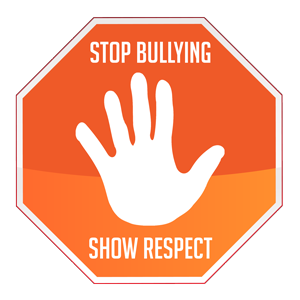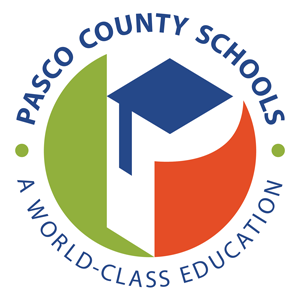Recycling
Recycling is a great way to help the enviroment and reduce our solid waste costs. The following are some recycling and conservation tips:
- One ton of paper made from recycled pulp saves 17 trees, 3 cubic yards of landfill space, 7,000 gallons of water, 4,200 kWh (enough to heat your home for half a year), 390 gallons of oil and prevents 60 pounds of air pollution.
- "Tin" cans such as tuna and soup cans are actually 99% steel. Americans throw away enough steel every year to build all the new cars made in America.
- Start composting - You can compost most uncooked kitchen waste such as fruit scraps and vegetable peelings, egg shells, teabags and coffee grounds, but not animal or dairy products. After 6 – 12 months this waste could turn into a fantastic free nutritious fertilizer for your flower beds, vegetable plots, hanging baskets and patio planters.
- Every year people throw away 600 million fluorescent lamps containing about 30,000 pounds of mercury into the landfills.
- Don’t forget side two. We can reduce the amount of paper that our schools use by copying or printing on both sides of the paper.
- Place recycling reminders and posters around your school and on recycling containers to encourage recycling.
- There are many items that can be reused such as binders, pencils, crayons, art supplies, craft supplies, etc. Donate your unwanted reusable materials to Creation Station.
- Recycling one ton of glass saves the equivalent in energy of 10 gallons of oil.
- Each person in the United States produces an average of 4.3 pounds of garbage every day!
- The average American uses 650 pounds of paper a year.
- Making a soda can from recycled aluminum uses 96% less energy than manufacturing a can from ore, produces 95% less air pollution and 97% less water pollution.
- Americans use four million plastic bottles every hour, yet only one out of four is recycled.
- Consider the products and packaging used. Eliminate any extra waste beforehand and use products made from recycled content.
- Cancel all unnecessary newspaper and magazine subscriptions.
For more information on recycling and solid waste, please contact .(JavaScript must be enabled to view this email address), Recycling Coordinator at (727) 794-2380
Energy Conservation
The District annually adopts an Energy Management Program to control and optimize the cost and consumption of energy and energy-related products. Our District has a goal to minimize and reduce energy consumption, measured in kWh per square foot, by 5% during the school year. With your energy conservation help we can meet this goal! The following energy and water saving tips are from the Energy Management Program manual:
- Educating the public, students and school staff about the economic and environmental costs of energy use is one of the best ways to help control energy waste.
- School energy conservation efforts and results are rewarded annually through a return of a portion of the energy cost savings.
- Initiate turning-off office equipment at night and when not in use. If the equipment has a power-saver mode, be sure it is enabled.
- Demonstrate effective conservation practices by turning-off lights when area is left unoccupied.
- Adjust lighting controls so that lights (inside and outside), are turned off each day after buildings are locked for the night.
- Set controls on water heaters for usage time only (preheat should be 15-30 minutes). If hot water is needed for general use, like hand washing only, reduce setting to 120 degrees Fahrenheit.
- Use proper partial lighting for after-hour activities (i.e. partial banks of lights for practice and group meetings).
- Close doors and windows when heating or air conditioning equipment is operating.
- Close all windows and doors when leaving at the end of the day and turn off all air conditioning, machinery, equipment and lights.
- Involve Earth Patrol students in monitoring energy use throughout the school.
- Comply with District cooling guidelines - 76 degrees plus or minus 2 degrees for all school areas including classrooms, media centers, shops and non-instructional spaces.
- Comply with District heating guidelines - 68 degrees for all school areas including classrooms, media centers, shops and other non-instructional spaces.
- Establish a resource center for energy education in your school.
- Solicit feedback from students and staff on energy conservation.
- Inform the public, parents and other groups about your school’s energy efforts.
- Use the theme of energy conservation in classroom materials.
- At school staff meetings, discuss energy costs and practical ways to reduce waste.
- Since there are more students than staff, the involvement of students can help create more energy-saving opportunities.
- Teachers can provide challenges to students to let them know they can make a difference in the energy costs of the school; provide opportunities for recognition; and sponsor awareness through energy conservation programs (Earth Patrol).
Water Conservation
The DSBPC annually adopts an Energy Management Program to control and optimize the cost and consumption of energy and energy-related products. Over the past several years, the Energy Management Committee has been concerned with increased water consumption and growing utility cost of poor water management habits. As with the energy program, there are many opportunities to reduce waste and curtail our rapidly growing reliance on precious limited ground water supplies. As water demands in Pasco County continue to increase the prices for fresh water will continue to climb. Most likely, the larger the consumption the higher the per-gallon rate paid by consumers. The following water saving tips are from the Energy Management Program manual:
- Adhere to state and local regulations when irrigating grounds.
- Provide rain sensors to irrigation systems. Use landscaping mulch to reduce water quantities.
- Report and repair water leaks immediately. Slow water drips waste 15-20 gallons per day.
- Up to 75% of water used to sprinkle lawns can be lost through evaporation from soil and plants.
- The use of water-saving toilets, shower heads and faucet aerators can cut water usage by as much as 25%.
- A garden hose discharges up to six-and-a-half gallons of water per minute under standard household water pressure.
- Hot water leaks not only are a waste of water, but a waste of the energy (and money) used to heat that water.
- A top-loading clothes washer uses between 40 - 55 gallons of water per load; front-load models reduce water usage by about 30%.
- Make sure washers and dryers are full to capacity before turning them on.
- Place a plastic bottle filled with water in your toilet tank if you can’t switch to a low flow toilet.
- Position your downspouts so rain water runs onto the lawn or into the garden, not down the driveway.
- Plant drought-resistant trees and flowers and use a 3” layer of mulch to keep soil moist, prevent erosion and suppress weeds.
- Irrigate landscape using a dedicated water line or reclaimed water; do not use potable water main.
- Plant Managers perform periodic water audits to check for leaking pipes.
- Every drop counts use it wisely.
- Visit the Southwest Florida Management District and Water Star for great resources to assist you with water conservation.








